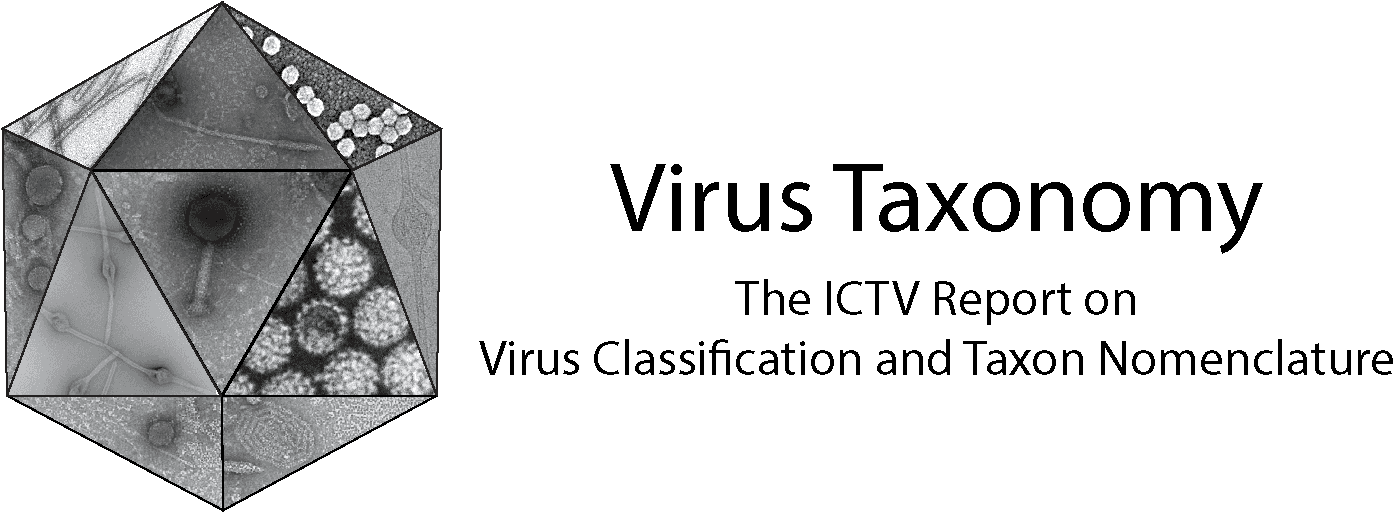Family: Adenoviridae
Genus: Testadenovirus
Distinguishing features
A lineage of testudinoid (turtle, tortoise and slider) adenoviruses has been documented that is phylogenetically very distinct from all other adenoviruses (Farkas and Gál 2009, Doszpoly et al., 2013, Harrach et al., 2019, Franzen-Klein et al., 2020, Salzmann et al., 2021). These viruses were detected and partially sequenced using PCR but have not yet been isolated. Their hosts (Testudines) are also very divergent from those of other adenoviruses. The rare cases when tortoise adenoviruses turned out to belong to other genera are presumed to be the consequence of host switching, examples being the siadenovirus Sulawesi tortoise adenovirus 1 (Rivera et al., 2009, Schumacher et al., 2012) or the barthadenoviruses found in spur-thighed (Greek) tortoise (Garcia-Morante et al., 2016) and in some further tortoise species (Salzmann et al., 2021). Testadenoviruses seem to have balanced G+C composition (suggesting constant coevolution with their present hosts the testudines) (Harrach et al., 2019).
Virion
Morphology
Not known.
Physicochemical and physical properties
Not known.
Nucleic acid
The nucleotide composition of the partially sequenced genome (14,776 bp) of red-eared slider adenovirus 1 (RSAdV-1, Testadenovirus trachemysis) is 55.2% G+C. The inverted terminal repeats (ITRs) have not been characterised.
Proteins
The partial RSAdV-1 genome sequence covers the middle part of the genome, which contains orthologues of all the 10 of the 16 family-common genes expected to be located here. Thus, these proteins are presumed to have roles similar to those in other adenoviruses. There is no gene encoding an equivalent of the mastadenovirus protein V.
Lipids
None reported.
Carbohydrates
See discussion under family properties.
Genome organization and replication
The partial RSAdV-1 genome sequence covers the conserved adenovirus genome region between the genes IVa2 and hexon in the same gene order as in other AdVs (but lacks the gene for protein V). In this sequence, only the pTP gene is predicted to be spliced. This gene is also spliced in all other adenoviruses. This fact corresponds to the finding in other AdVs, as only the pol is spliced in this region but only in mastadenoviruses.
Biology
Testadenoviruses seem to be non-pathogenic for turtles, tortoises and sliders. Unfortunately, their isolation and propagation have been unsuccessful so far.
Species demarcation criteria
There is a single species in the genus: Testadenovirus trachemysis. At least two of the following demarcation criteria could be used to delineate further species when the full genomes will be gained from the related unclassified testadenoviruses:
- Phylogenetic distance (>10–15%, based on maximum likelihood analysis of the pol amino acid sequence)
- Host range
- Nucleotide composition
Related, unclassified viruses
| Virus name | Accession number | Abbreviation |
| black pond turtle adenovirus | MT900847 | |
| Blanding’s turtle (Emydoidea) adenovirus 1 | MW561636 | |
| bog turtle (Glyptemys) adenovirus 1 | PP938068 | |
| bog turtle (Glyptemys) adenovirus 2 | PP938071 | |
| bog turtle (Glyptemys) adenovirus 3 | PP938077.1">PP938077 | |
| bog turtle (Glyptemys) adenovirus 4 | PP938075 | |
| Chinese pond turtle adenovirus | PP198045 | |
| eastern box turtle adenovirus | JN632579 | |
| Galápagos tortoise adenovirus | OU508386 | |
| green sea turtle adenovirus | PP198038 | |
| Hermann’s tortoise adenovirus | MT900849 | |
| Indian star tortoise adenovirus; ornate box turtle adenovirus | EU828750 | |
| painted turtle adenovirus 1 | PQ043767 | |
| painted turtle adenovirus 2 | PQ043772 | |
| pancake tortoise adenovirus | JN632575 | |
| red-footed tortoise adenovirus 1 | KU601299 | |
| red-footed tortoise adenovirus 2 | KU601301 | |
| saw-shelled turtle adenovirus 1 | OL791322 | |
| saw-shelled turtle adenovirus 2 | OP076952 | |
| saw-shelled turtle adenovirus 3 | OP076953 | |
| yellow-bellied slider adenovirus | JN632578 |
Virus names and virus abbreviations are not official ICTV designations.
Testadenoviruses have been identified by PCR usually from random samples and characterized by sequencing the amplicons (Farkas and Gál 2009, Doszpoly et al., 2013, Archer et al., 2017, Franzen-Klein et al., 2020, Salzmann et al., 2021, Nieto-Claudin et al., 2022, Okoh et al., 2023b, Tóth et al., 2024, Bartlett et al., 2025, Mendoza-Alcívar et al., 2025, Ready et al., 2025a, Ready et al., 2025b). They show considerable phylogenetic distances, but longer sequences would be needed to establish new species.

